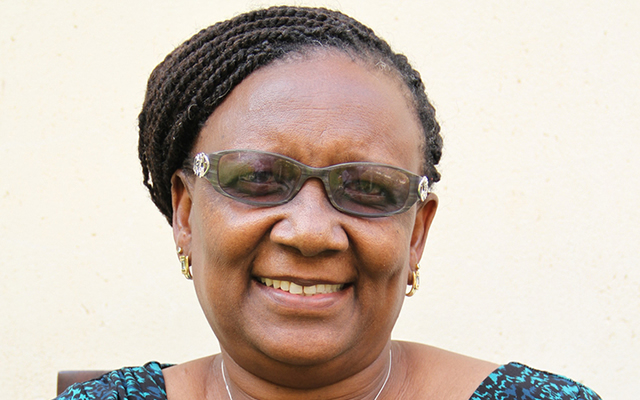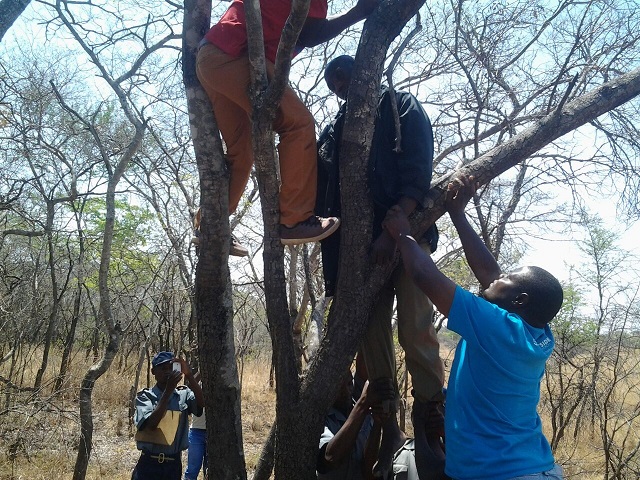EDITORIAL COMMENT: Speed up the feeding programme in affected areas

There are certain measures that families resort to when they are faced with food shortage.
At the initial stages of the food scarcity, they tend to employ short term and normally reversible coping mechanisms but if the shortage persists, they frequently take more desperate and less reversible strategies. If the families take the more desperate measures, it becomes difficult for them to improve their social and economic conditions even if the food supply situation improves.
Studies show that first, households usually change their diet. They, for example, might switch from eating foods they prefer the most, to cheaper, less favoured substitutes. If the situation does not improve, they, second, can attempt to increase their food supplies using short-term but unsustainable strategies when relied on over a long period. This includes borrowing or buying food on credit. In this category of coping mechanisms, families can also resort to extremes. examples are begging or eating wild foods, immature crops, or even seed stocks.
If the food is still inadequate to meet the dietary needs of households, they can try to reduce the number of people that they have to feed by sending some of them elsewhere. This typically entails decision makers in households sending younger members of the family to their neighbours or relatives to eat, thus making sure that the small portions still in their household is eaten by the older family members. Fourth, and most common, households can attempt to manage the food deficit by rationing the food available to the household. They reduce the portion or the number of meals, giving certain household members food over others, or going for whole day without eating.
There is substantial evidence of some of these strategies unfolding as the country battles food shortages after the 2015/16 drought, said to be the worst in 35 years.
The Zimbabwe Vulnerability Assessment Committee (Zimvac) 2016 Rural Livelihoods Assessment survey shows, as we reported yesterday, that while some are borrowing to meet education costs, the bulk of borrowers are taking loans to be able to buy food.
“The highest proportion of households across all provinces were borrowing to buy food. Matabeleland South (54 percent), Matabeleland North (52 percent) and Masvingo (50 percent) had the highest proportions of households borrowing to purchase food,” reads the report.
“Rural food insecurity for the period April to June 2016 was estimated at 6 percent and is projected to reach 42 percent during the peak hunger period (January to March 2017). This is the highest rural food insecurity prevalence estimated since 2009. As expected, there is a progressive increase in the proportion of food insecure households as the consumption year progresses towards the peak hunger period,” reads the report.
This tells us that the food insecurity challenge is huge in the three provinces. Using the World Food Programme’s four-stage index alluded to earlier, most households in Matabeleland South, Matabeleland North and Masvingo are in the second stage.
We commend the Government and its partners in their efforts to feed the hungry. At the same time, we appeal to them to intensify their work in the worst cases — Matabeleland North, Masvingo and Matabeleland South so that the people in the three provinces do not resort to the irreversible measures they are taking to acquire food.
Only a few circumstances are more degrading than going hungry for long periods and heads of households having to rely on loans to be able to put food on the table. We are concerned that, if left to deteriorate further, there will come a time when the food insecure households will borrow so much that they get entrapped in debt and will be unable to extricate themselves from it. When this happens, the families will have been left with no one to borrow from. The result of such a situation is extreme hunger which leaves people malnourished and physically emaciated.
The ZimVac study says rural food insecurity for the period April to June 2016 was estimated at six percent but is likely to rise to 42 percent between January and March 2017. This will be the highest rural food insecurity prevalence since 2009 when the economic challenges were at their gravest, also a year when the country was hit by yet another drought.
We are, however, encouraged by the recent statement by the Minister of Public Service, Labour and Social Welfare, Prisca Mupfumira that the Government and its partners are on the ground, working to update the figures of the food insecure households and to understand the extent of the challenge. Such regular programmes are the way to go since, as we quoted her saying in our issue of yesterday, food scarcity is a dynamic phenomenon.
As of last week, she said, the country had 320 000 tonnes of maize for distribution to the hungry. This is a good reserve of food which must reach those in need of it before they run out of options.










Comments